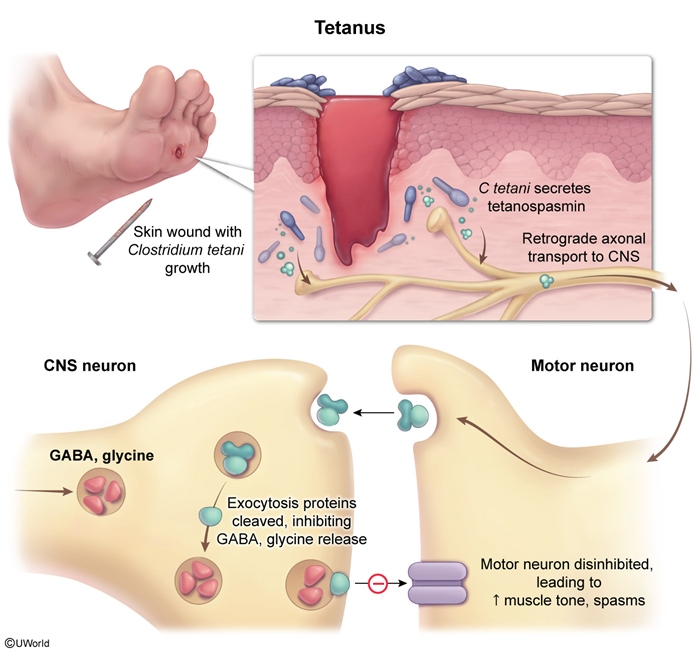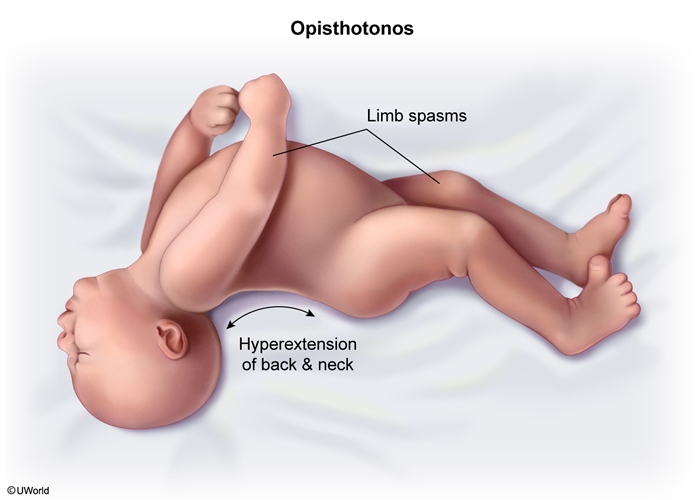Tetanus
Article Sections
Introduction
Tetanus is an acute, life-threatening neuromuscular disease caused by the neurotoxin tetanospasmin, which is produced by Clostridium tetani.
Pathophysiology
Clostridium tetani is a spore-forming, gram-positive anaerobic bacteria normally found in soil. The disease develops when spores enter the body through a break in the skin. The spores germinate in anaerobic conditions (like that of a puncture wound) and subsequently produce a potent metalloprotease exotoxin (tetanospasmin or tetanus toxin). Using retrograde axonal transport (Figure 1), the toxin migrates through lower motor neurons to inhibitory interneurons in the CNS at the level of the spinal cord and brainstem; there, it acts on the anterior horn cells, blocking the release of inhibitory neurotransmitters (glycine, GABA). This action leads to uncontrolled firing of alpha motor neurons and subsequent tonic muscle contraction.
Continue Learning with UWorld
Get the full Tetanus article plus rich visuals, real-world cases, and in-depth insights from medical experts, all available through the UWorld Medical Library.
Figures

